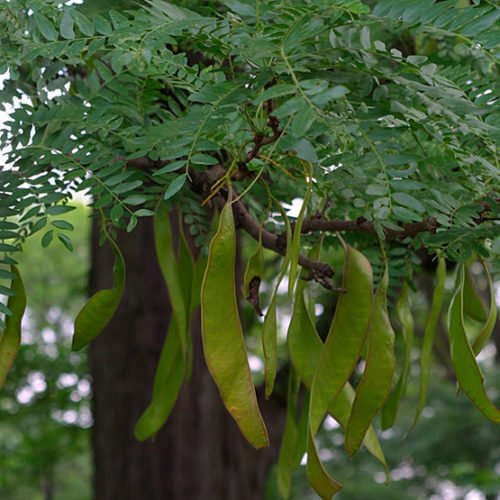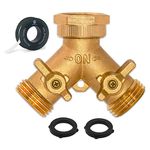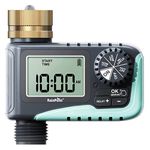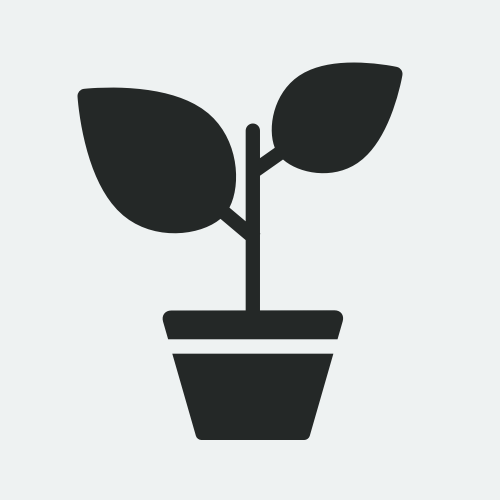
Honey locust grows in the wild from Pennsylvania to Iowa and south to Georgia and Texas. In the landscape, this large, spreading, deciduous tree is valuable for its elegant form and pinnate, ferny leaves that cast a dappled shade. Flowers are generally inconspicuous, but are followed by unusual large seed pods. Fall color can be a nice yellow, but leaves sometimes fall without noticeably changing colors. The species has a thorny trunk and shoots, but thornless cultivars are available.
Noteworthy CharacteristicsNative to the eastern and central U.S. Ferny foliage doesn't produce heavy leaf litter. Interesting seed pods that look like large, twisted pea pods. Adaptable to a variety of growing conditions.
CareThis native tree is adaptable to any fertile, well-drained soil in full sun.
PropagationScarify seed and sow in containers in fall in an open frame. Cultivars can be budded in summer or grafted in late winter.
ProblemsTar spot, powdery mildew, twig and trunk canker, leaf spot, heart rot, and mushroom root rot are possible problems, as are caterpillars, mites, aphids, borers, webworms, honeylocust pod gall midges, honeylocust plant bugs, scale insects, and plant hoppers.
Fine Gardening Recommended Products

Morvat Heavy Duty Brass Y-Valve
Fine Gardening receives a commission for items purchased through links on this site, including Amazon Associates and other affiliate advertising programs.
- Fitted with US Standard NH 3/4" threads for use with most water source fittings
- Screw the 2 way splitter adapter by hand or wrench with the updated hexagonal top connection. The 360° rotatable swivel connection attaches to any water source.

Johnny’s Selected Seeds Connecta® Cultivation Kit
Fine Gardening receives a commission for items purchased through links on this site, including Amazon Associates and other affiliate advertising programs.

RAINPOINT Sprinkler Timer with Brass Swivel
Fine Gardening receives a commission for items purchased through links on this site, including Amazon Associates and other affiliate advertising programs.
- Built-in metal filter gaskets can prevent sediment and other larger particles
- Through the Sprinkler Timer program, you can set the start time, watering duration, and watering frequency
- Genus : Gleditsia
- Zones : 3, 4, 5, 6, 7
- Plant Height : 30 feet or more
- Plant Width : 30 feet or more
- Moisture : Adaptable
- Growth Rate : Fast
- Light : Full Sun
- Maintenance : Moderate
- Characteristics : Showy Foliage, Showy Seed Heads
- Bloom Time : Spring
- Plant Seasonal Interest : Summer Interest
- Plant Type : Trees
Plant Characteristics are only available to Fine Gardening members
Sign up for a free trial and get instant access to our complete plant guide as well as our entire collection of articles and videos.



























